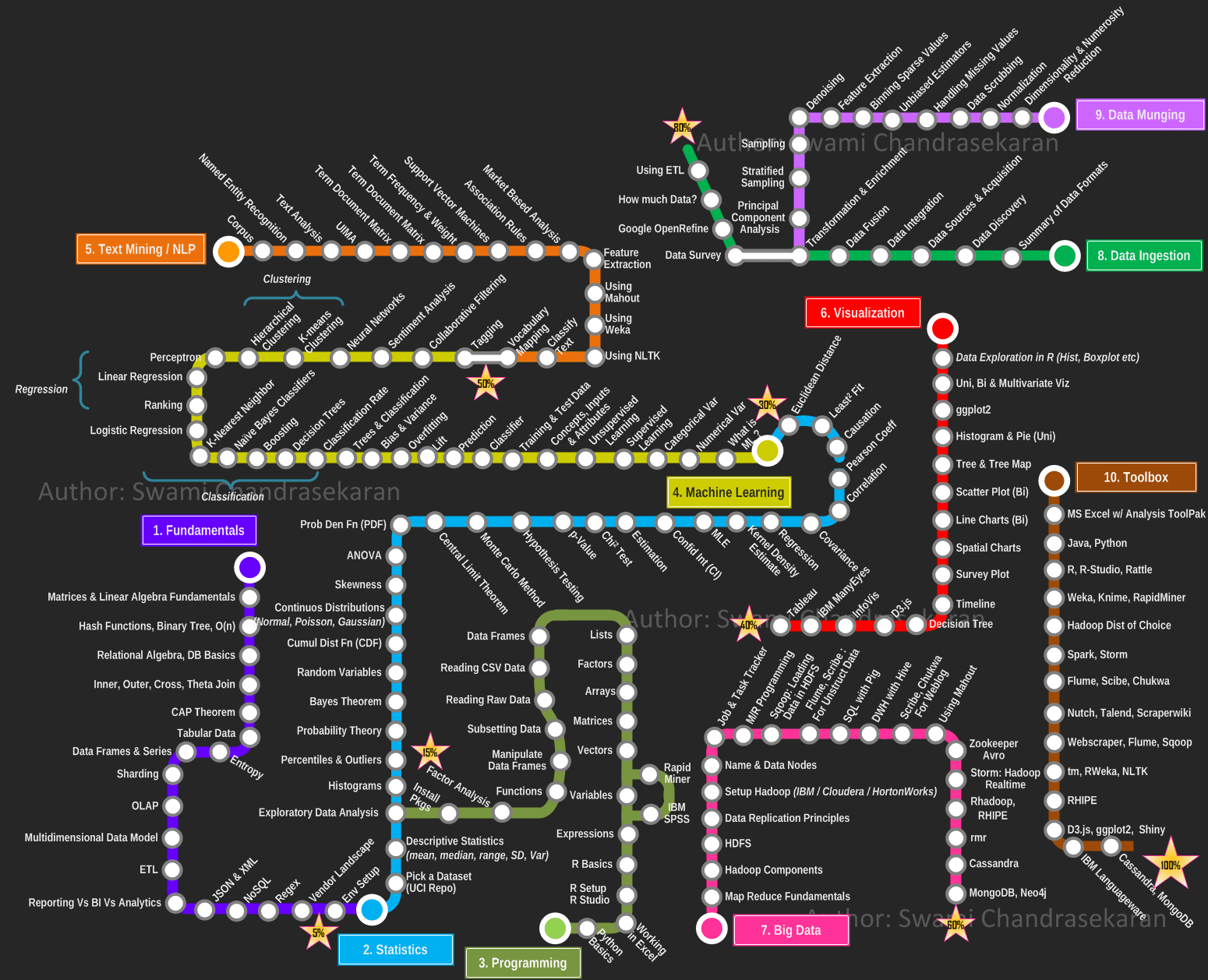The Art of Learning Data Science
- by 7wData

These days, I am sure 90% of LinkedIn traffic contains one of these terms: DS, ML or DL — acronyms for Data Science, Machine Learning or Deep Learning. Beware of the cliche though: “80% of all the statistics are made on the spot”. If you blinked on these acronyms perhaps you need to google a bit and then continue reading the rest of this post. This post has 2 goals. First, it attempts to put all the fellow Data Science learners at ease. Second, if you have just begun on the Data Science, this may serve you as a guide to the next step.
Here is an image I came across on the internet:
Where to start! How to start?:
I started the journey of Data Science in the beginning of October, 2017. First 15 days spent in just trying to answer a single question, “What is Data Science” in a manner that is convincing to me. After browsing a variety of resources on the internet, Quora, Medium, Springboard blogs and e-books, Udacity blogs, Forbes, datascience.com, KDnuggets, datasciencecentral.com, analyticsvidhya and random web-crawling, absorbing all the information with spoonfuls of salt (pinches of salt not enough, don’t blame me for not warning you), I concluded that Data Science (in layman terms) is making a computer draw nice graphs using data and translating it into a story that makes sense to address business problems. Yes, it is that simple. No it is not? yes it is. Well, there are two broad types of Data Science jobs, here I am talking about Data science for business. The other one’s end product is not a story, but a data driven product. Let us not get into that because then we digress into Machine Learning Engineering. Typically Google, Facebook etc have data driven roles, which fall into second category. Much of the academic research is also of second type too.
Back to the first type, let me make it a little more advanced definition. Data Science is the process of coming up with answers to business questions with the help of historical data, by cleaning and analysing it first, then fitting it into one (or combination) of the machine learning model(s) and often forecasting and suggesting measures to prevent possible future issues. Ah. that is quite cool, isn’t it? Once I got convinced about first question, I thought about what is the best way to learn it.
“The best way to learn it”?!:
Again I spent a few days looking up this phrase and lo, I found countless advice. This time there was no other option but to try a few of them. I have Bachelors and Masters degrees in Electronics and Communications Engineering and a decade of experience of programming in languages like C/C++, Octave/Matlab, Verilog/SystemVerilog, perl. Mathematics was my favorite subject since my childhood, Probability was the favorite in Masters. Experience with programming and Probability is a definite plus in my case.
I was a bit afraid of the term “Machine Learning”, and I am the type who likes to face the fear head on, so ended up enrolling in Prof Andrew’s Coursera course. That is the first one I took and I am glad it worked well for me. I was literally scared of both Python the snake and the language, but fortunately Andrew’s course exercises are in Octave. I tried learning Python fundamentals from Coursera, Udacity, Edx and Datacamp and chose Coursera and Datacamp. I knew that as a beginner in data science, R would perhaps be the better start. However, at that point of time, I was not too confident of taking only the data science path. Python is more general. Took several courses across several platform at the same time. Tried Intro to Machine Learning, Statistics, CS Fundamentals, Intro to Data Science etc on Udacity.
[Social9_Share class=”s9-widget-wrapper”]
Upcoming Events
Evolving Your Data Architecture for Trustworthy Generative AI
18 April 2024
5 PM CET – 6 PM CET
Read MoreShift Difficult Problems Left with Graph Analysis on Streaming Data
29 April 2024
12 PM ET – 1 PM ET
Read More




